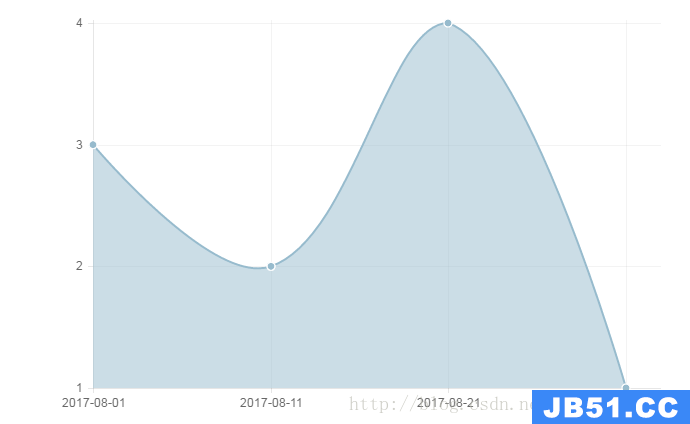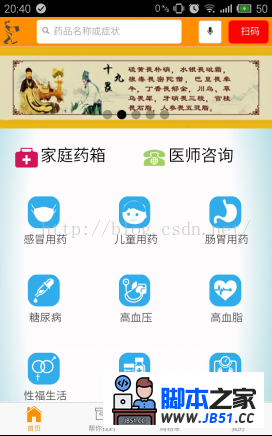原文地址:https://docs.angularjs.org/guide/controller。
Understanding Controllers
理解控制器
In AngularJS,aController is defined by a JavaScriptconstructor functionthatis used to augment theAngularJS Scope.
在AngularJS中,一个控制器被一个JavaScript构造函数定义,用来扩大AngularJS Scope。
When aController is attached to the DOM via theng-controllerdirective,AngularJS willinstantiate a new Controller object,using the specified Controller'sconstructorfunction. A newchild scopewill be created and madeavailable as an injectable parameter to the Controller's constructor functionas$scope.
当一个控制器被通过ng-controller指示符附在一个DOM上,AngularJS将会实例化一个控制器对象--使用控制器的构造函数。一个新的child scope将会被创建,可以以$scope的名字,作为一个对于控制器构造方法可被注入的参数开始生效。
If thecontroller has been attached using thecontrollerasSyntaxthen the controller instance will be assigned to a property on the new scope.
如果控制器被使用controller as语法而附加上,控制器实例将会被分配给新的scope的一个属性。
Use controllersto:
使用控制器到:
Do not use controllers to:
不要使用控制器到:
- Manipulate DOM — Controllers should contain only business logic. Putting any presentation logic into Controllers significantly affects its testability. AngularJS hasdatabindingfor most cases anddirectivesto encapsulate manual DOM manipulation.
- 操控DOM----控制器应该只包含业务逻辑。把任何展示逻辑放入控制器会影响它的可测试性。AngularJS对于大多数情况有databinding和directives去封装手工的DOM操作。
- Format input — UseAngularJS form controlsinstead.
- 表单输入----使用AngularJS form 控制替代。
- Filter output — UseAngularJS filtersinstead.
- 过滤输出----使用AngularJS filters替代。
- Share code or state across controllers — UseAngularJS servicesinstead.
- 在控制器间共享代码和状态----使用AngularJS services替代。
- Manage the life-cycle of other components (for example,to create service instances).
- 管理其它组件的声明周期(例如,去创建service实例)。
Typically,whenyou create an application you need to set up the initial state for theAngularJS$scope. You set up the initial state of a scopeby attaching properties to the$scopeobject.The properties contain theview model(the model that will bepresented by the view). All the$scopepropertieswill be available to thetemplateat the point in the DOM wherethe Controller is registered.
典型的,当你创建一个应用,你需要去建立AngularJS的$scope的初始状态。你通过给$scope对象附着上属性设置一个scope的初始状态。这些属性包含这个view model(被那个view所呈现的model)。所有这些$scope属性对于template是可用的----在Controller被注册的DOM的那个点上。
The followingexample demonstrates creating aGreetingController,which attachesagreetingproperty containing the string'Hola!'to the$scope:
以下例子展示了创建一个GreetingController,这附着了一个greeting属性(包含着字符串“Hola”)给$cope。
var myApp =angular.module('myApp',[]);
myApp.controller('GreetingController',['$scope',function($scope) {
$scope.greeting = 'Hola!';
}]);
We createanAngularJS Module,myApp,for our application. Then we add the controller's constructor functionto the module using the.controller()method.This keeps the controller's constructor function out of the global scope.
我们创建一个AngularJS Module,myApp,给我们的应用。然后我们增加这个控制器的构造函数给模块----使用.controller()方法。这使得控制器的构造函数在全局范围之外。
We have used aninline injection annotationtoexplicitly specify the dependency of the Controller on the$scopeservice provided by AngularJS. See the guide onDependency Injectionfor moreinformation.
我们使用了一个inline injectionannotation去显式地指定被AngularJS提供的$scope service之上的控制器的依赖。参看Dependency Injection的指导来获取更多信息。
We attach ourcontroller to the DOM using theng-controllerdirective.
我们附着我们的控制器到DOM上----使用ng-controlle指示符。
Thegreetingproperty can Now be data-bound to the template:
这个greeting属性现在可以被数据限制(data-bound)在模板中。
<divng-controller="GreetingController">
{{ greeting }}
</div>
In order toreact to events or execute computation in the view we must provide behavior tothe scope. We add behavior to the scope by attaching methods to the$scopeobject. These methods are then available to be called from thetemplate/view.
为了在view中对events或者execute computation做出反应,我们必须提供行为给scope。我们增加行为给scope----通过附着方法给$scope对象。这些方法然后在这个template/view中被调用是有效的。
The followingexample uses a Controller to add a method,which doubles a number,to thescope:
下面的例子使用一个Controller去增加方法--这个方法对一个数字进行翻倍—给scope。
var myApp =angular.module('myApp',[]);
myApp.controller('DoubleController',function($scope){
$scope.double = function(value) { returnvalue * 2; };
}]);
Once theController has been attached to the DOM,thedoublemethod canbe invoked in an AngularJS expression in the template:
一旦这个控制器被附着给DOM,这个double方法就可以被调用在一个AngularJS表达式中,在这个模板里面。
<divng-controller="DoubleController">
Two times <inputng-model="num"> equals {{ double(num) }}
</div>
As discussed intheConceptssection of this guide,anyobjects (or primitives) assigned to the scope become model properties. Anymethods assigned to the scope are available in the template/view,and can beinvoked via AngularJS expressions andngeventhandler directives (e.g.ngClick).
就像这个指南的Concepts章节讨论的,任何对象(或者原语)分配给这个scope就成为了model的属性。任何方法分配给scope就在template/view中有效,并且可以被调用,通过AngularJS的表达式和ng event handler 指示符(例如:ngClick)。
Using ControllersCorrectly
In general,aController shouldn't try to do too much. It should contain only the businesslogic needed for a single view.
The most commonway to keep Controllers slim is by encapsulating work that doesn't belong tocontrollers into services and then using these services in Controllers viadependency injection. This is discussed in theDependency InjectionandServicessections of this guide.
Associating Controllers withAngularJS Scope Objects
You canassociate Controllers with scope objects implicitly via thengController directiveor$route service.
Simple SpicyController Example
To illustratefurther how Controller components work in AngularJS,let's create a little appwith the following components:
- Atemplatewith two buttons and a simple message
- A model consisting of a string namedspice
- A Controller with two functions that set the value ofspice
The message in our template contains a binding to thespicemodel which,by default,is set to the string "very".Depending on which button is clicked,thespicemodel isset tochiliorjalapeño,and themessage is automatically updated by data-binding.
Edit in Plunker
<divng-controller="SpicyController">
<buttonng-click="chiliSpicy()">Chili</button>
<buttonng-click="jalapenoSpicy()">Jalapeño</button>
<p>The food is{{spice}} spicy!</p>
</div>
Things to noticein the example above:
- Theng-controllerdirective is used to (implicitly) create a scope for our template,and the scope is augmented (managed) by theSpicyControllerController.
- SpicyControlleris just a plain JavaScript function. As an (optional) naming convention the name starts with capital letter and ends with "Controller".
- Assigning a property to$scopecreates or updates the model.
- Controller methods can be created through direct assignment to scope (see thechiliSpicymethod)
- The Controller methods and properties are available in the template (for both the<div>element and its children).
Spicy ArgumentsExample
Controllermethods can also take arguments,as demonstrated in the following variation ofthe prevIoUs example.
Edit in Plunker
<divng-controller="SpicyController">
<inputng-model="customSpice">
<buttonng-click="spicy('chili')">Chili</button>
<buttonng-click="spicy(customSpice)">Custom spice</button>
<p>The food is{{spice}} spicy!</p>
</div>
Notice thattheSpicyControllerControllerNow defines just one method calledspicy,which takesone argument calledspice. The templatethen refers to this Controller method and passes in a string constant'chili'in the binding for the first button and a modelpropertycustomSpice(bound toan input Box) in the second button.
ScopeInheritance Example
It is common toattach Controllers at different levels of the DOM hierarchy. Since theng-controllerdirective creates a newchild scope,we get a hierarchy of scopes that inherit from each other.The$scopethat each Controller receives willhave access to properties and methods defined by Controllers higher up thehierarchy. SeeUnderstanding Scopesformore information about scope inheritance.
Edit in Plunker
<divclass="spicy">
<divng-controller="MainController">
<p>Good {{timeOfDay}},{{name}}!</p>
<divng-controller="ChildController">
<p>Good {{timeOfDay}},{{name}}!</p>
<divng-controller="GrandChildController">
<p>Good{{timeOfDay}},{{name}}!</p>
</div>
</div>
</div>
</div>
Notice how wenested threeng-controllerdirectivesin our template. This will result in four scopes being created for our view:
- The root scope
- TheMainControllerscope,which containstimeOfDayandnameproperties
- TheChildControllerscope,which inherits thetimeOfDayproperty but overrides (shadows) thenameproperty from the prevIoUs scope
- TheGrandChildControllerscope,which overrides (shadows) both thetimeOfDayproperty defined inMainControllerand thenameproperty defined inChildController
Inheritance works with methods in the same way as it does with properties.so in our prevIoUs examples,all of the properties Could be replaced withmethods that return string values.
Testing Controllers
Although thereare many ways to test a Controller,one of the best conventions,shown below,involves injecting the$rootScopeand$controller:
ControllerDeFinition:
var myApp =angular.module('myApp',[]);
myApp.controller('MyController',function($scope) {
$scope.spices = [{"name":"pasilla","spiciness":"mild"},
{"name":"jalapeno","spiciness":"hot hothot!"},
{"name":"habanero","spiciness":"LAVAHOT!!"}];
$scope.spice = "habanero";
});
Controller Test:
describe('myControllerfunction',function() {
describe('myController',function() {
var $scope;
beforeEach(module('myApp'));
beforeEach(inject(function($rootScope,$controller) {
$controller('MyController',{$scope:$scope});
}));
it('should create"spices" model with 3 spices',function() {
expect($scope.spices.length).toBe(3);
});
it('should set thedefault value of spice',function() {
expect($scope.spice).toBe('habanero');
});
});
});
If you need totest a nested Controller you must create the same scope hierarchy in your testthat exists in the DOM:
describe('state',function() {
var mainScope,childScope,grandChildScope;
beforeEach(module('myApp'));
beforeEach(inject(function($rootScope,$controller) {
mainScope = $rootScope.$new();
$controller('MainController',{$scope:mainScope});
childScope = mainScope.$new();
$controller('ChildController',{$scope:childScope});
grandChildScope = childScope.$new();
$controller('GrandChildController',{$scope:grandChildScope});
}));
it('should have overand selected',function() {
expect(mainScope.timeOfDay).toBe('morning');
expect(mainScope.name).toBe('Nikki');
expect(childScope.timeOfDay).toBe('morning');
expect(childScope.name).toBe('Mattie');
expect(grandChildScope.timeOfDay).toBe('evening');
expect(grandChildScope.name).toBe('GingerbreadBaby');
});
});





